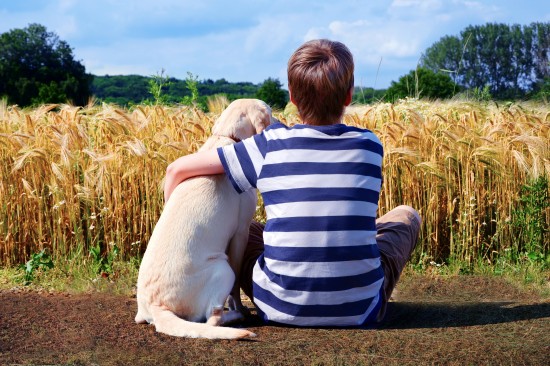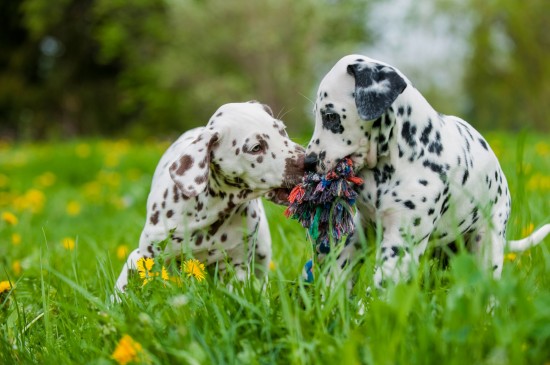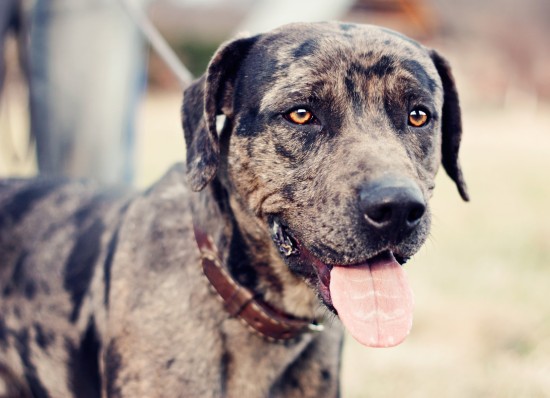

Creating a strong and positive bond with your dog is vitally important, and affects the happiness of both you and your pet in the long term. How difficult or easy it is to deal with your dog on a day-to-day basis, as well as how easy your dog finds it to deal with you, comes down in large part to bonding, and how you and your dog view each other, communicate and understand each other’s feelings and intentions.
Bonding is the process by which people or animals or a combination of both build up the process of a mutually beneficial love, affection and reliance. Bonding is different to simply liking or enjoying the company of another dog or person, and forms the basis of a symbiotic relationship where both the dog and the person gain from the relationship, and become emotionally connected to each other. Bonding does not have to be unique to one dog and one person, as of course an entire family can bond with their dog, and one owner can be bonded with multiple dogs at once.
People often assume that in order to create a strong, meaningful bond with a dog that they intend to keep for life, the only way to do this is to get a puppy rather than an adult dog. It is often perceived that becoming the first and only person or family to build a relationship with the dog in question is the only real way to cement the bonds that will support your relationship for life. However, this is not the only way to bond with a dog, and there are no barriers in a dog’s later life to keep them from loving and accepting a new owner or family!
While puppies learn about bonding and friendship while they are still young, it is important to differentiate between their learning the ability to bond, and the bonding process itself. When raised and trained correctly, a new puppy will come to learn how to form meaningful ties with their human family; a skill that will set them up for life and enable them to make future bonds with additional caregivers or new owners.
If a puppy has had a bad start to life or has been mishandled, neglected or inappropriately trained, they might find it harder to bond with new people and handlers later on. This does not mean that creating a bond with the dog is impossible, but simply that like any other form of learning and training, you will have to go back to basics and teach your dog about bonding and love by means of your interactions with them, instead of assuming that healthy bonding is already familiar to your dog.
Whether you have just got a new dog or puppy or have owned your dog for several years, it is important to not only build up the initial bond between you but to work on maintaining it for the duration of your lives. As with any relationship, your relationship with your dog will only thrive and endure if you keep working at it, and take the time to establish the kind of routines and behaviour patterns that will keep your relationship with your dog happy and healthy in the long term.
 If You Are Planning To Breed From Your Cat Or Have Already Done So And The Time For Weani
If You Are Planni
If You Are Planning To Breed From Your Cat Or Have Already Done So And The Time For Weani
If You Are Planni
 Puppies - Can They Be Over-exercised?
Puppies - Can The
Puppies - Can They Be Over-exercised?
Puppies - Can The
 7 Highly Unusual Dog Breeds With Unique Traits
7 Highly Unusual
7 Highly Unusual Dog Breeds With Unique Traits
7 Highly Unusual
 What Causes Fur Loss In Rabbits?
What Causes Fur L
What Causes Fur Loss In Rabbits?
What Causes Fur L
 Why Is My Puppy Sneezing ?
Why Is My Puppy S
Why Is My Puppy Sneezing ?
Why Is My Puppy S
Copyright © 2005-2016 Pet Information All Rights Reserved
Contact us: www162date@outlook.com